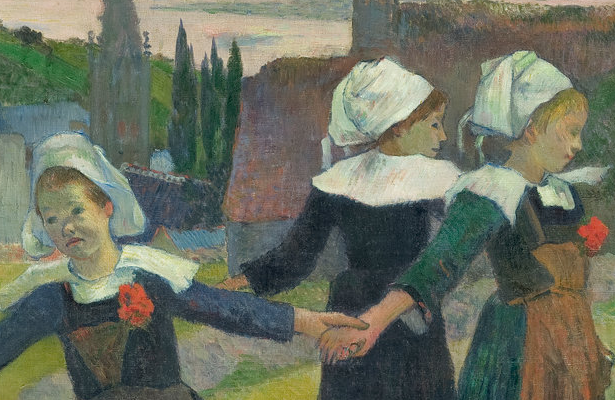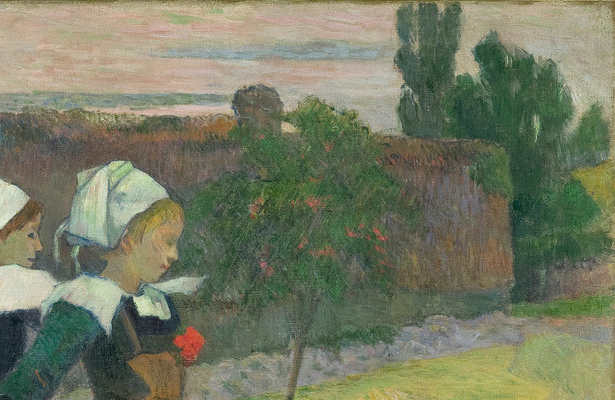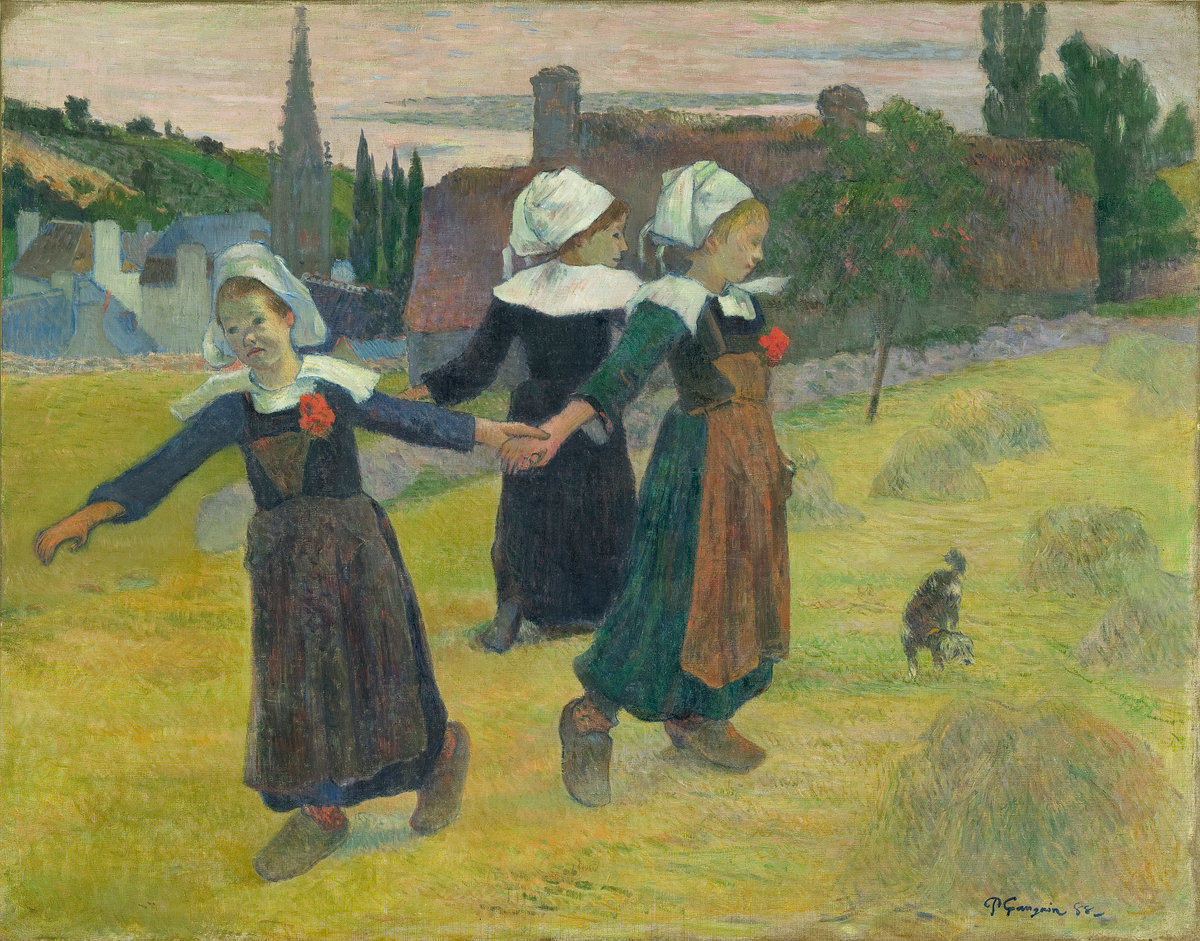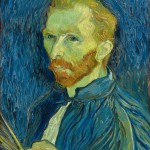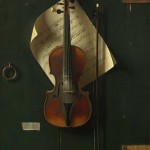Gauguin wrote to art dealer Theo van Gogh (brother of Vincent), “I am doing a gavotte bretonne: three little girls dancing in a hayfield… The painting seems original to me, and I am quite pleased with the composition.” The subject itself was a familiar one; Breton dances, religious processions, and other peasant scenes by academic painters were shown with some frequency at the Salon. Parisian audiences would have recognized the girls’ triangular bonnets, broad collars, and wooden shoes immediately.
But Gauguin’s aim was not to present an anecdotal view of life in Brittany. The somnolent, ritualistic quality of the girls’ dance conveys ambiguity. His dancers loom overlarge in front of a stone wall, their size emphasized by small heaps of grain. Gauguin’s eye was also trained on concerns of color and form. The girls’ linked arms create a sinuous chain of zigzags that seems to fence them into a narrow space. This effect is enhanced by strong contrasts of color: the dark dresses and white collars, the brilliant poppies attached to their smocks, and the green of new hay.
The town of Pont-Aven and its church spire can be recognized in the background of this scene. In 1886, the year after he painted his gavotte, Gauguin found the place overcrowded with artists. Seeking a more isolated—and less expensive—environment, he and several colleagues took up residence in Le Pouldu, a small hamlet nine kilometers distant.







